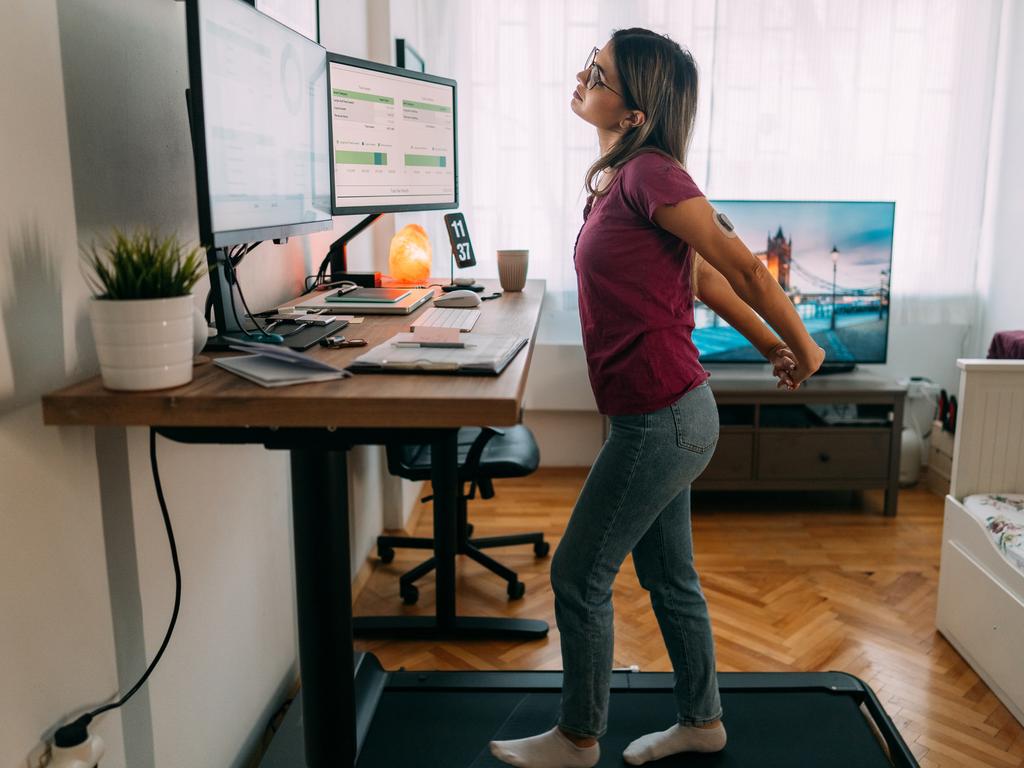‘Don’t risk it’: ATO’s big 2024 warning to Aussies who work from home
Remote and hybrid workers across Australia have been warned against a surprisingly common WFH act that could land them in big trouble.
Australians who work from home have been issued a stern warning ahead of tax time over a sneaky act that could land them in hot water.
The ATO has announced it will be cracking down on working from home expenses this year, with Aussies warned not to “double dip” when submitting their tax return.
With remote or hybrid working arrangements increasingly becoming the norm, more and more people are submitting working from home related deductions when completing their tax returns.
Last year, more than eight million people claimed a work-related deduction, with around half of those claimed for working from home.
ATO Assistant Commissioner Rob Thomson said WFH expenses are one of the areas that people are most likely to get wrong, hence why it is under scrutiny this year.
He said that, while these mistakes are often genuine, there are also cases where they are “deliberate”.

There are two different ways employees can calculate their work from home deductions: the fixed rate and the actual cost method.
Mixing up these methods is what often leads to people ‘double dipping’, whether they realise they are doing it or not.
“One thing we’re focused on this year is making sure that people don’t double dip, so they don’t claim things like their internet or their phone expenses separately if they’re using that fixed rate method,” Mr Thomson told the ABC, adding that the other area of focus is record keeping.
“People need to keep a record of all the hours they’ve worked from home for the whole year. “Now that can be a time-sheet, that can be a spreadsheet, that can be a diary, whatever the person wants that works for them.”
How to use the different methods
Under the fixed rate method, you can claim 67c for each hour you worked from home during the relevant income year.
This rate includes the additional running expenses you incur for:
– home and mobile internet or data expenses
– mobile and home phone usage expenses
– electricity and gas (energy expenses) for heating, cooling and lighting
– stationery and computer consumables, such as printer ink and paper.
If you are using this method, you can’t claim an additional separate deduction for any of these expenses.
Though there are some things you can claim a separate deduction for, including the work-related use of technology and office furniture such as chairs, desks, computers, bookshelves.
If the item cost $300 or less and you use it mainly for a work-related purpose, you can claim an immediate deduction for the cost in the year you buy it.
You can also claim a deduction for the decline in value of depreciating assets.

Under the actual costs method, tax payers work out their deduction by calculating the actual additional expenses incurred when working from home.
This includes expenses incurred for:
– the decline in value of depreciating assets – for example, home office furniture (desk, chair) and furnishings, phones and computers, laptops or similar devices.
– electricity and gas (energy expenses) for heating, cooling and lighting
– home and mobile phone, data and internet expenses
– stationery and computer consumables, such as printer ink and paper
– cleaning your dedicated home office
You can only claim the work-related portion of these expenses. For example, if you use your mobile phone for work 40 per cent of the time and the rest is personal use, then you can only claim 40 per cent of your phone bill when lodging your tax return.
Richard Whitten, money expert at Finder, told news.com.au that the actual costs method provides a more “detailed” calculation, while the fix rate method covers more “general” expenses.
“A dedicated workspace at home justifies claiming a portion of your electricity bill and cleaning costs,” he said, referring to the actual costs method.
“Remember to keep receipts and records to support your deductions. This will make it easier to substantiate your deductions if the ATO requests proof.”

Mr Thompson also warned people against using the exact same working from home deductions as they did last year, saying it can lead to an awkward phone call from the ATO.
“Copying and pasting your working from home claim from last year may be tempting, but this will likely mean we will be contacting you for a ‘please explain’,” he said.
“Your deductions will be disallowed if you’re not eligible or you don’t keep the right records.”
Aussies admit to lying on their tax returns
A recent Finder survey of more than 1000 Australians saw one in ten admit to lying on their tax return.
The research found five per cent made more deductions than they should have and three per cent didn’t report overseas income.
A further two per cent didn’t report capital gains or their crypto earnings.
It appears the younger generations are more prone to lying on their tax return, with 17 per cent of Gen Zers and 15 per cent of millennials admitting to being untruthful about their finances.
This is compared to just five per cent of Gen X and baby boomers.
Sarah Megginson, a personal finance expert at Finder, warned against lying in the hopes of receiving a higher tax return.
“Even a mistake you didn’t mean to make can cause trouble. Don’t risk making things worse by trying to ‘trick the system’,” she said.
“If you have a complex tax situation, leave it to the professionals. They can walk you through the process and make sure everything is filed correctly.”






